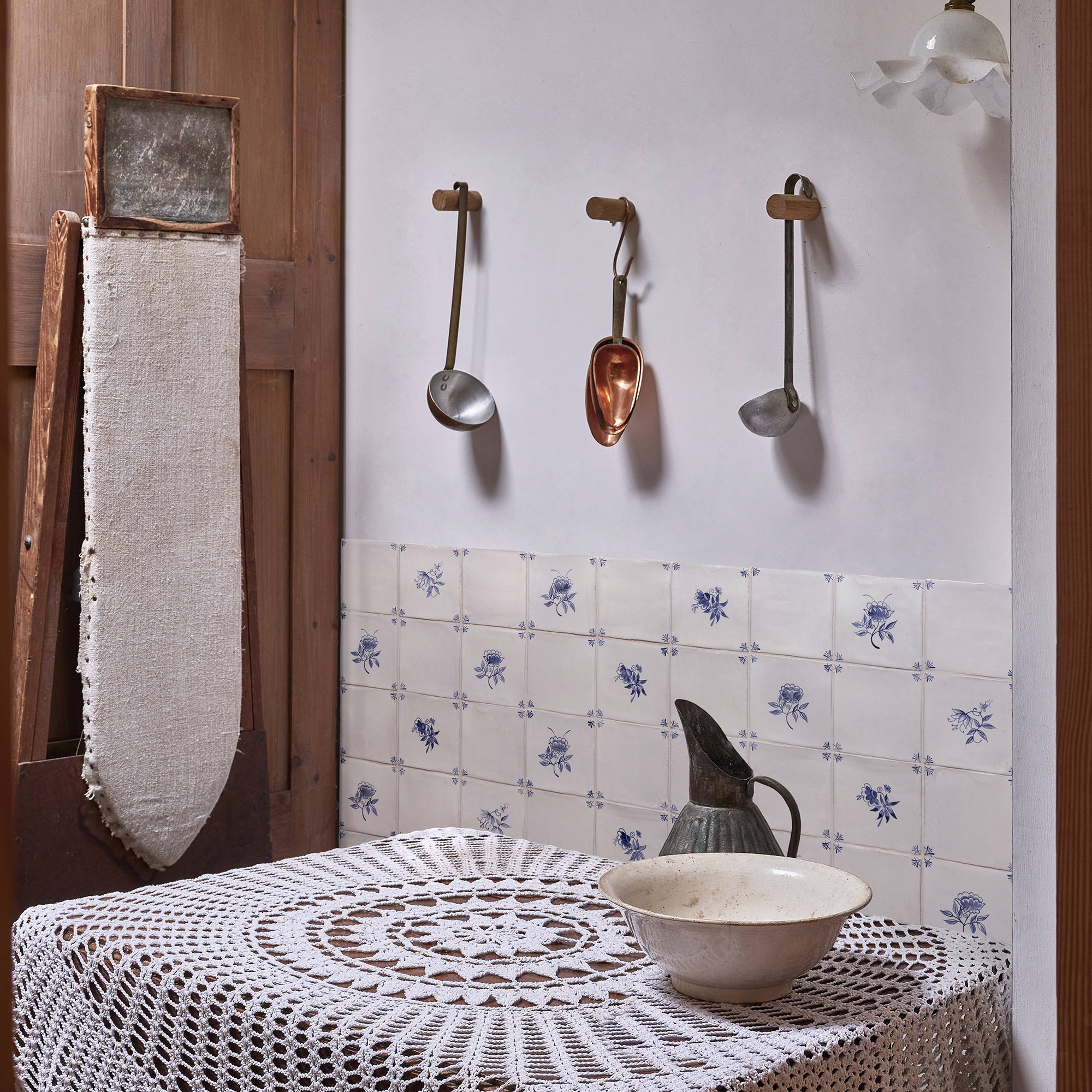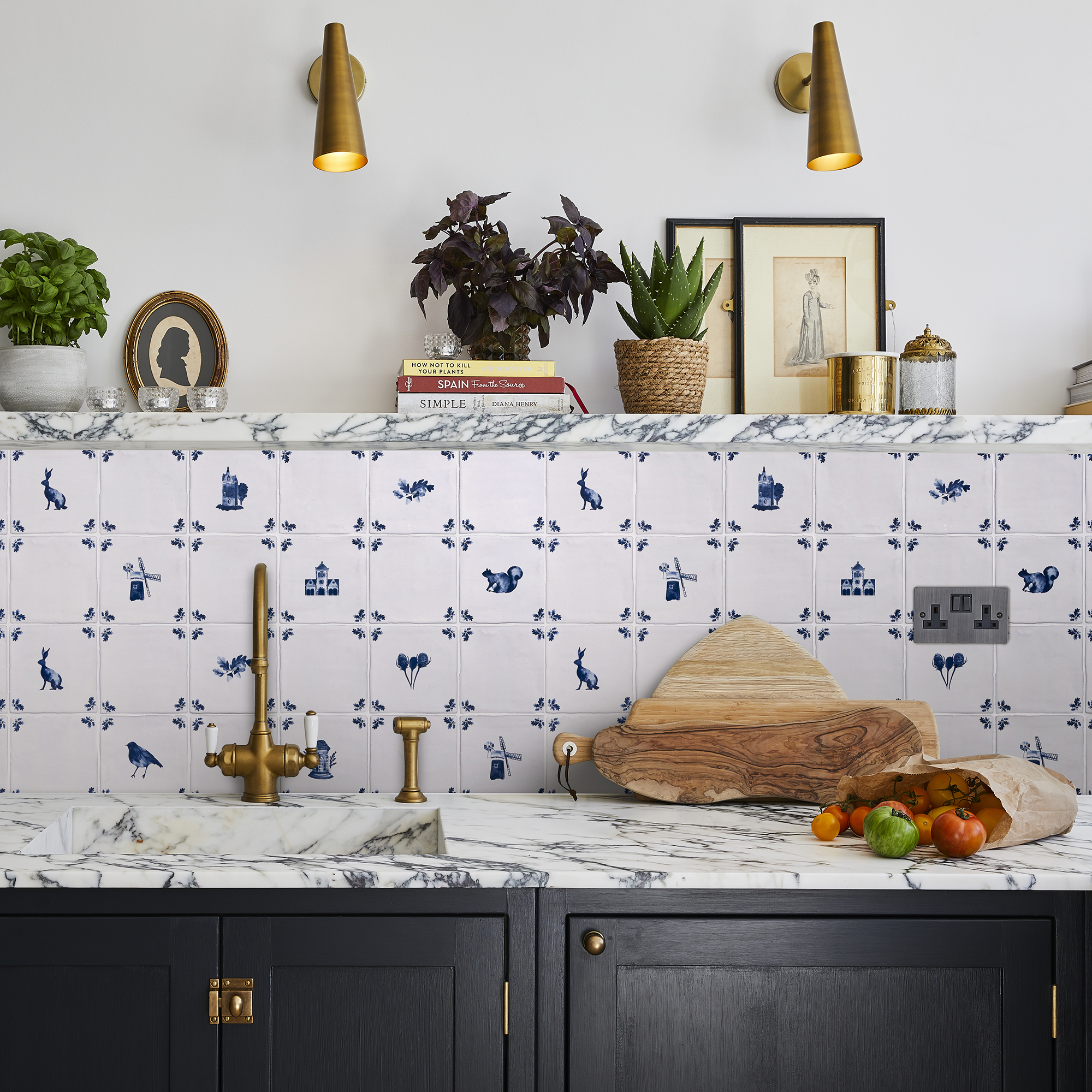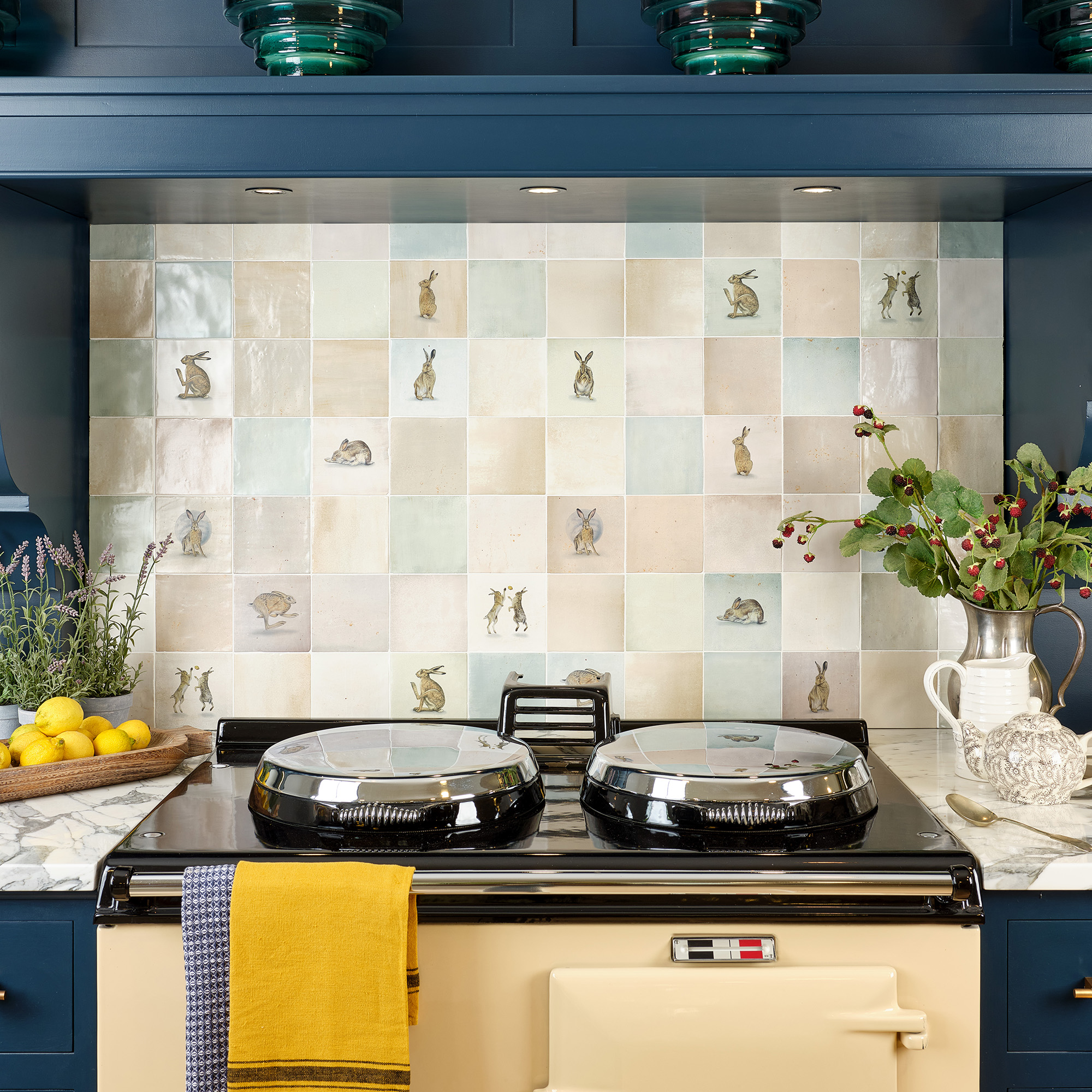
2026 is on the horizon and with the New Year comes a whole new set of kitchen trends to be inspired by - and we think pattern splicing is the one to watch.
This is a new direction for kitchen tile ideas; a trend that celebrates pattern but also makes it accessible. Traditional English decor is becoming increasingly popular, particularly in kitchens where homely aesthetics create an inviting atmosphere, and pattern plays a huge part in this.
However, florals and Delft motifs can sometimes feel tricky to use. They're playful and can have a huge impact on your overall kitchen scheme, even when used sparingly, but it's nonetheless a big decision when it comes to committing to a more permanent design. This is where pattern splicing comes in: a clever way of breaking up patterned tiles with a more simplistic choice to lighten the look without losing character. Here's how to incorporate the kitchen trend in your home.
What is pattern splicing?

Pattern splicing is as simple as it sounds. It involves using pared-back, plain tiles as a way of 'splicing' the pattern, making it more accessible for those who don't want to commit to a busier look. It's the art of combining decorative tiles with plain ones to create a characterful and interesting design that doesn't overwhelm a space.
Grazzie Wilson, head of creative at Ca’ Pietra, explains, 'Design today is moving away from perfect symmetry towards something more soulful. Pattern splicing lets you build a story into your space without overwhelming it. By interspersing decorative tiles with plains, you introduce rhythm, surprise and personality. It is a technique that feels instinctive and expressive, yet it works effortlessly in real homes.'
How to recreate pattern splicing in a kitchen

There's a common thread running through some of the most popular kitchen trends for 2025 and 2026, and that's a sense of character. Kitchens are the most lived-in room in the home, particularly if you have an open plan layout, so homely, inviting design choices will make a cooking space feel uniquely yours.
'Part of the appeal of this trend is its sense of individuality. Pattern splicing invites personal expression where decorative tiles become punctuation marks within a scheme,' Grazzie adds. 'They can reflect a love of nature, a favourite colour story, a rural upbringing or a cherished memory. Unlike full-pattern tiles, this approach feels timeless because it never tries too hard.'

Pattern splicing is an easy feature to recreate in your home; it's designed to be accessible, allowing you to make the most of pattern without committing the whole look to it. It's perfect for a kitchen splashback as it adds just the right amount of intrigue.
'A consistent base tile holds the design together, often a gloss square or zellige-style ceramic in cream, chalk, clay, sage or blush,' explains Grazzie. 'Decorative pieces are introduced at intervals to create rhythm, perhaps one patterned tile every five or seven plains, or grouped to frame architectural moments such as a range cooker or basin.'
Texture is also crucial. Mixing motif tiles with a slightly 3D finish complements plain glossy tiles, and similarly, keeping to the same tonal colour palette will result in even the most colourful and characterful designs to feel carefully considered.
There are so many ways to vary this look depending on your personal taste, too. If you're looking to add to a country kitchen idea, Delft tiles are the route forward, intersected with handcrafted cream tiles. Likewise, if your taste leans more contemporary, opting for a tile with an abstract shape will be just the right amount of pattern.
Shop the trend
This plain white square tile from Victorian Plumbing will go with any decorative tile.
Ca' Pietra's collaboration with Divine Savages is the ultimate way to make florals modern.
Pattern splicing gives you so much opportunity to create a look that is unique to your home. You can decide how colourful and pattern-packed the look is, so that you create a kitchen tile idea you love looking at.







